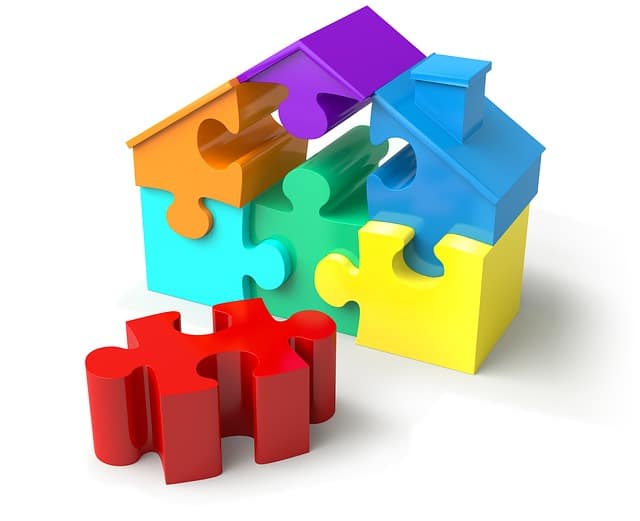
Understanding The Pieces of Homeowners Insurance
Home » Home Insurance » Homeowners Insurance Coverage
Home is a place where you raise your family and create lasting memories. It is important to understand the different pieces of homeowners insurance. So whether it is your “starter home” or the high-value home of your dreams, it is important to consider the different types of home insurance coverages.
The agents at Big Pine Insurance will help you discover the right homeowners insurance coverage to fit your growing needs. We educate our clients on the types of home insurance options available to protect what matters the most. Also, we will provide you with options from multiple companies. Then choosing the right coverage at the price that fits your budget will be easy.
What does homeowners insurance cover?
Home insurance will cover a range of risk associated with owning a home. For example if your home catches on fire and burns to the ground, this could become a financially devastating event to recover from. Homeowners insurance policies are designed to cover losses in two areas:
Property Damage: This part of home insurance typically covers your home and personal property from various perils such as fire, wind, hail, lightning and vandalism. All home insurance policies are subject to the policy exclusions from the insurance company covering the risk. For example, damage caused by floods or an earthquake are not typically covered.
Homeowners insurance coverage in a typical insurance policy depends on the type of policy form used to design the home insurance protection. Insurance coverages can vary among insurance companies. However in general most companies follow the Insurance Services Office (ISO) format. This is an organization that collects statistical data, develops standard policy forms and files information with state regulators on behalf of insurance companies that purchase their service.
Liability and Medical Expense Coverage: Liability and medical insurance coverage is the second part of homeowners insurance coverage. Liability and medical expense coverage pays when you are legally liable for bodily injury or property damage to others. This coverage can pay for accidents and negligent acts that occur on or off your premises. Coverage can also cover your pets. In general, liability coverage provides for defense if you are sued due to negligent acts. However, coverage can vary among insurance companies. Insurance coverage is subject to the policy terms and exclusions of the insurance company issuing the policy.
What are the different types of homeowners insurance?
Home Insurance
Determining the type of homeowners insurance coverage is very confusing for most people. Coverage can vary by state and insurance companies offering home insurance protection. Each insurance company may have their own name for the different types of homeowners insurance protection. However, most insurance companies follow the following standard homeowners forms:
HO-1 (Basic Form): This type of homeowners policy covers against 10 major perils. HO-1 policies do not cover your personal belongings in the home. This type of coverage is rarely ever written for home insurance protection.
HO-2 (Broad Form): An HO-2 is policy is designed to cover up to 16 major perils. This policy will also cover your personal property in the home. However, since this is a named peril policy, it’s important to understand that only the perils listed in the policy are considered covered events.
HO-3 (Special Form): The HO-3 policy is the most common type of home insurance policy written. This type of home insurance policy covers the dwelling on an open peril approach and your personal property on a named peril approach. This means that your home insurance will pay for any hazard on the dwelling unless the cause of loss is specifically excluded. Earthquakes and floods are examples of common exclusions. Personal property is covered under 16 named perils in the policy.
HO-5 (Comprehensive Form): This is the broadest form of homeowners insurance to protect your residence. An HO-5 policy covers more than an HO-3 policy. The dwelling and your personal property is covered under an open-perils approach versus a named-perils approach. This means that if the hazard causing the loss is not explicitly excluded in your policy, the insurance company will cover the loss on the dwelling and your personal property.
HO-8 (Modified Coverage Form): This type of home insurance coverage is most commonly used with older or historic homes. An HO-8 policy covers 10 major perils. This coverage is designed to cover older homes that would cost more to repair than its current market value.
Condo Insurance
Many condos are covered by a master insurance policy through the homeowners association that covers the entire (outside) dwelling structure. However, most master policies have a deductible that the condo owner is responsible for to cover their ownership in the condo unit. It is common for associations to have $2,500, $5,000 or even $10,000 dollar deductibles. Condo insurance through your association will not cover your personal property or provide personal liability insurance if someone is hurt inside your residence.
HO-6 (Condo Form): An HO-6 condo form is used to cover the gaps in insurance coverage that is not covered by the homeowners associations master insurance policy. Like home insurance, condo insurance can be customized to cover the master policy deductible for interior damage to the dwelling unit. Other typical coverages in a condo insurance policy include coverage for personal property, loss of use, medical payments and personal liability insurance. The HO-6 is a named perils policy that provides protection against 16 named perils that could occur.
Renters Insurance
Accidents can happen wherever you might call home. If you are renting an apartment or home, your landlord’s coverage doesn’t cover your stuff. The best way to protect your personal property is with a renters insurance policy. When bundled with your auto insurance, renters insurance is very affordable.
HO-4 (Tenant’s Form): This type of policy is specifically for renters. An HO-4 renters insurance policy covers your personal property and provides personal liability protection. It does not cover the building structure that you live in. The HO-4 is a named perils policy. This means that your insurance policy covers losses due to 16 named perils in the policy.
For example, renters insurance can cover your belongings if they are damaged in a fire or stolen. Renters insurance can also cover injuries that happen at your residence or lawsuits if someone sues you. If the home you are renting needs repairs and you’re unable to live there, renters insurance will also pay for your additional living expenses that you may incur like hotels and food.
Get Homeowners Insurance Quotes from Big Pine Insurance Agency
Above, we’ve outlined different types of home insurance policies available. Keep in mind that some insurance companies may take the best parts of the different types of policies and create their own unique homeowners insurance coverage. For example, some companies may only offer an HO-3 policy but they may offer different customize-able options to create a blend of an HO-3 and HO-5 policy.
For this reason, we understand that choosing the right home insurance is overwhelming. However, our agents will help simplify the process of discovering the right homeowners insurance coverage for your protection. With this in mind, contact us today to start your homeowners insurance comparison by calling us at 801.607.5241 or use our quick contact form.
